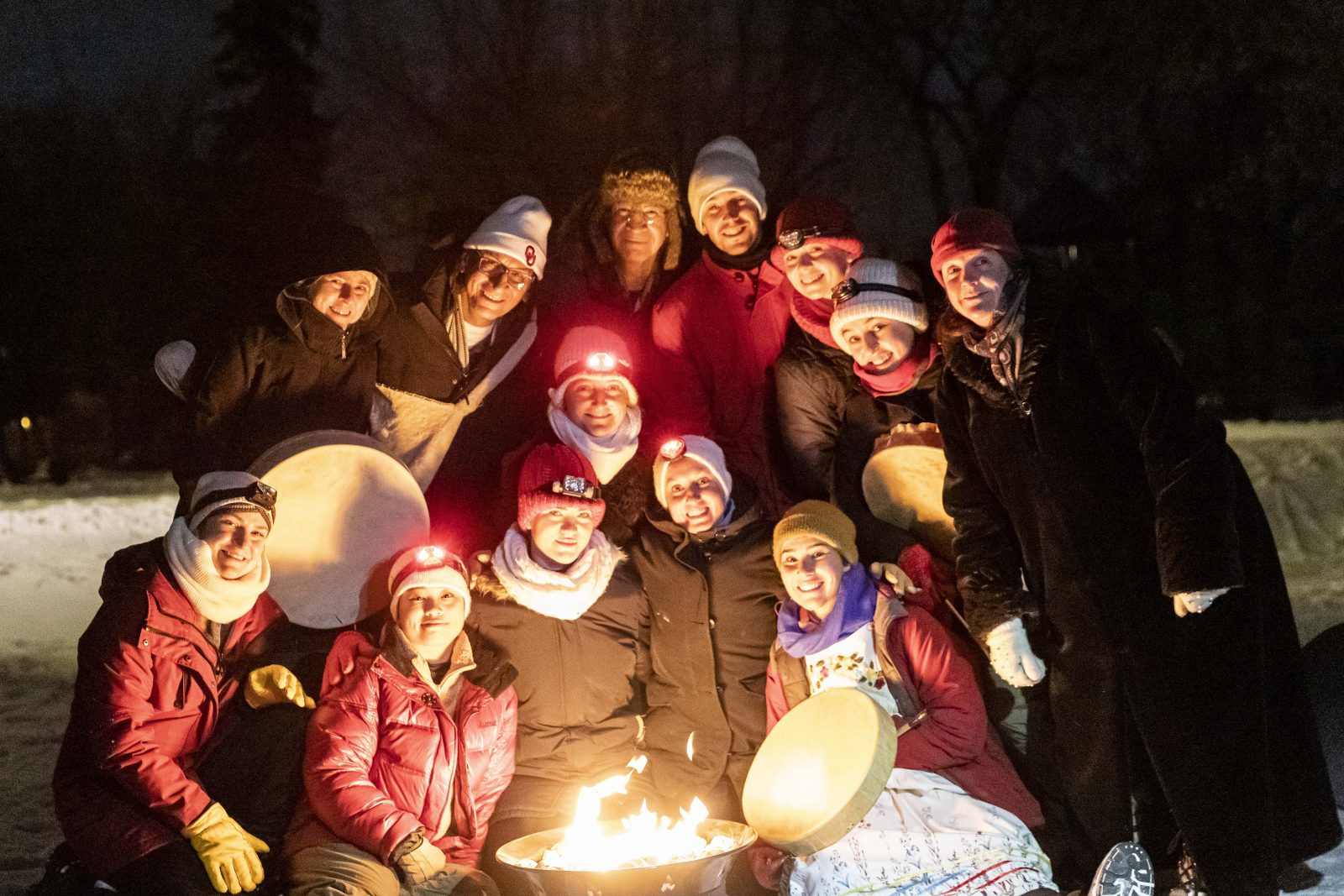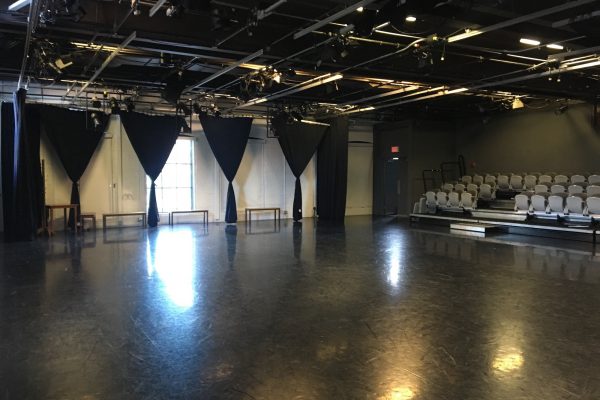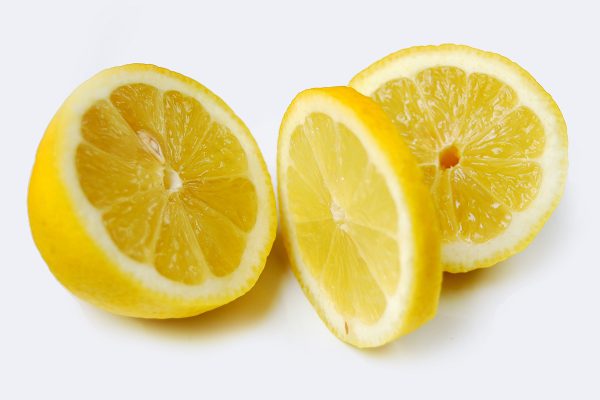Editor’s Note: The author of this article has an existing professional relationship with Free Flow Dance, having worked with the company on several occasions, and has a personal relationship with Jackie Latendresse, the artistic director.
This article is published through our Regional Reporter Program. We acknowledge the support of the Canada Council for the Arts through the Digital Now initiative.
***
Despite Saskatchewan’s frigid winters, two Saskatoon dance companies have been offering outdoor cold-weather events and finding ways to thrive in the snow.
The pandemic prompted Free Flow Dance Theatre Company and KSAMB Dance Company to provide programming outside, year-round, with both groups enjoying the challenges of winter and gaining a deeper appreciation for the season.
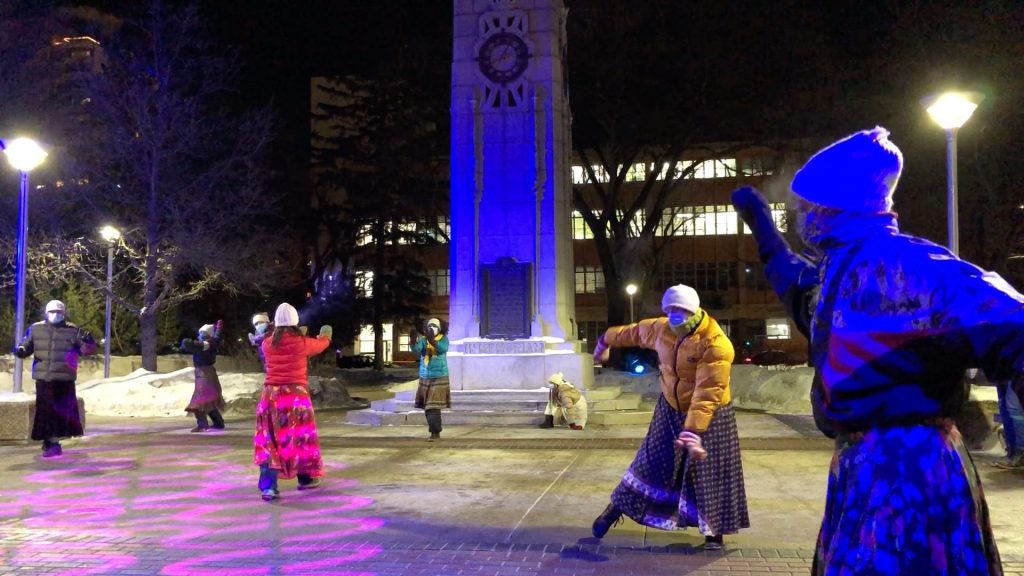
For Jackie Latendresse, artistic director of Free Flow, working outdoors in winter means providing steady work for the company’s contract dancers and continuing to bring the performing arts to audiences. “People were depressed,” she said. “People still are. They need to have entertaining and poignant artistic activities in their lives.”
“People in Saskatchewan are a hardy bunch,” replied Latendresse when asked about audience attendance at cold-weather events. “People do want to go outside in winter in the Prairies. And it’s also a really beautiful place to be outside.”
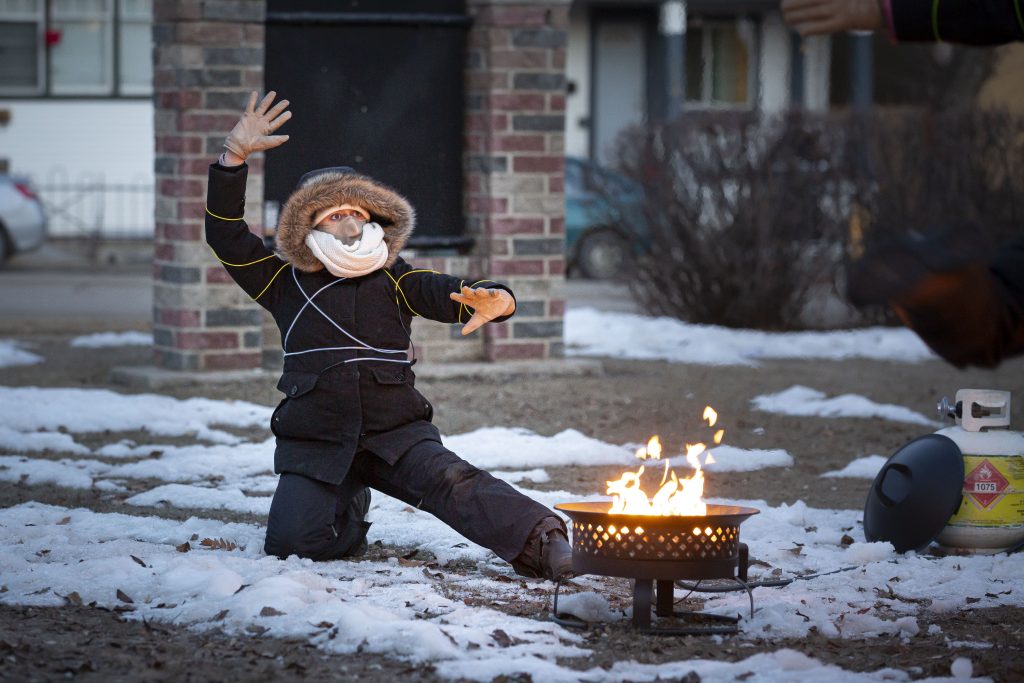
Even in the cold season, and even when temperatures drop below -20 C or -30 C, KSAMB holds outdoor programming three days a week, including two drop-in community programs. “We get holed up in our homes in the winter,” remarked Miki Mappin, co-founder of the company. “But, when you do go out, and when you make a commitment,… it has such built-in rewards.”
“The connection to the earth and the elements … is such a joyful part of it,” commented Kyle Syverson, the other co-founder of KSAMB.
Working outdoors in winter is not without its difficulties and limitations. Cancelled rehearsals, postponed shows, a lack of public warm-up areas, icy surfaces plus sound and lighting equipment freezing up are realities that the companies have encountered with the cold.
KSAMB faced the predicament of keeping a cell phone warm enough to record videos. “We ended up building a special little box to put a phone in, and you put hand warmers in the box,” Mappin explained.
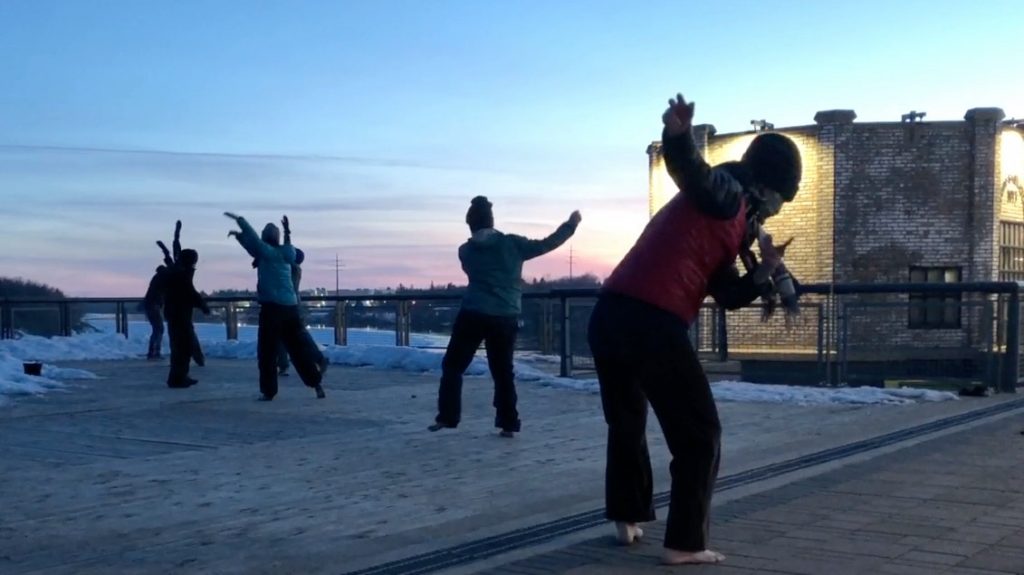
Good winter clothing is very important and requires a different approach than what dancers would typically wear. Snowsuits, scarves, toques, mittens and boots can all alter the way a dancer moves and what shapes they can form with their body. “I can’t really point my feet in my winter boots,” said Taylor Zeller, a dancer with Free Flow.
The movement itself is also a key factor in overcoming the chilly weather. “If you have the proper winter gear,… and you’re dancing,” said Latendresse, “you’re actually quite warm.”
Both companies attest to the usefulness of hand warmers and keep their winter performance times at around a half-hour in length. “All of our winter shows have involved fire pits… either for the dancers or for the audiences, or for both,” Latendresse mentioned as another method to beat the cold.
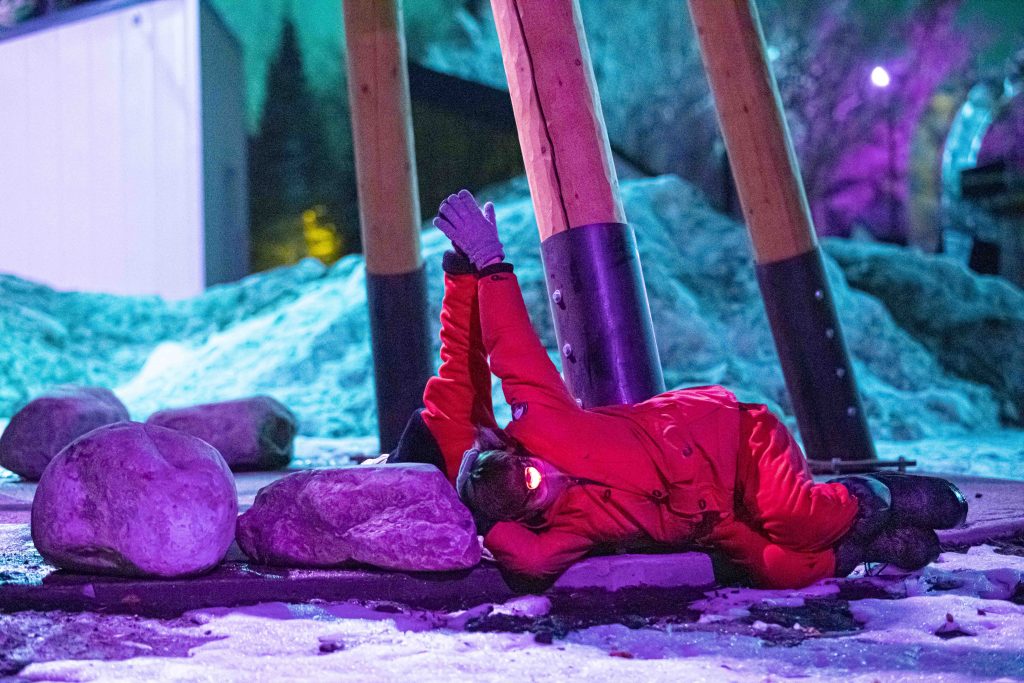
“I’m OK being outside as long as I know I can dress for it and I kind of know the time period,” commented Julia Million, an audience member who attended Free Flow’s The Compass in November. She added that dance shows are “a really nice thing to do outside during COVID … especially during the wintertime.”
The Compass took place in a Saskatoon park after the sun went down. Richard Manley-Tannis, who attended when temperatures dipped down to -25 C with wind chill, spoke to the importance of embracing the cold. “It’s Saskatchewan,” he remarked. “So if you don’t go outside [because of the cold], sometimes it will be for weeks on end.”
Shelly Manley-Tannis described an experience that occurred right before the show started, something that could never happen inside a theatre. “I heard a noise, like a whoosh, and somebody yelled ‘Look!’… Everybody looked up and an owl had flown into one of the trees nearby.”
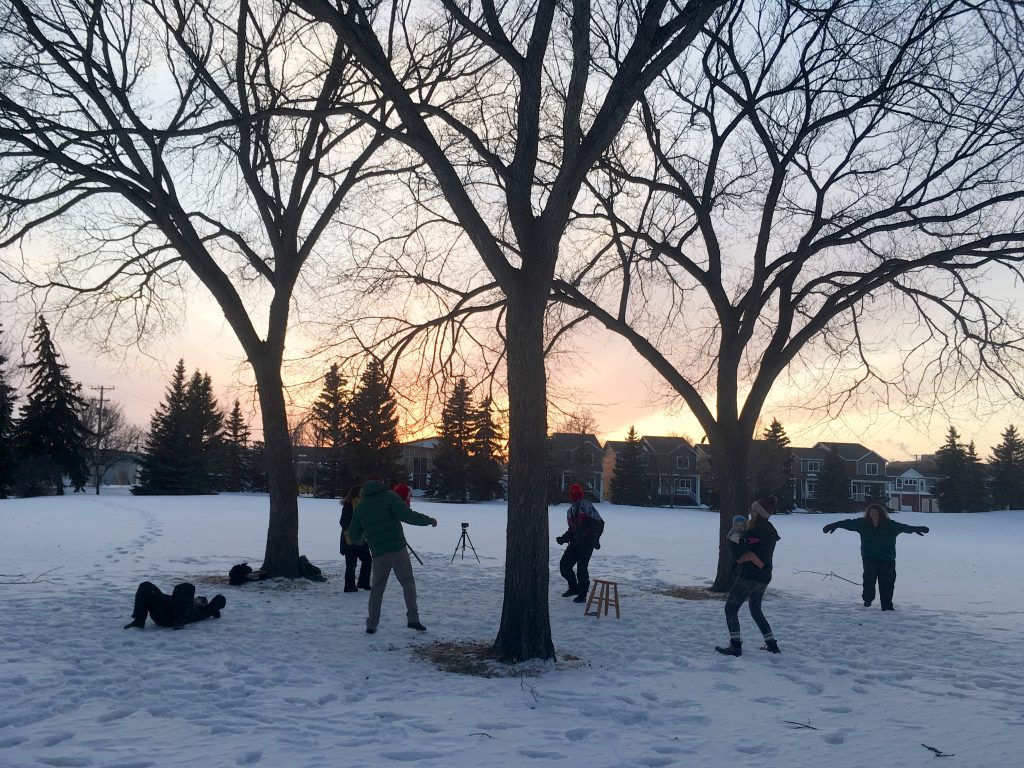
Snow is a natural wonder that makes the outdoor dance events extra special. “Snow is a beautiful set that you can light. You can’t pay for that kind of set piece,” said Latendresse. “It’s incredibly beautiful and unique and magical.”
“There were times that we did use the snow to our advantage,” remarked Zeller. “We were actually able to sculpt the snow in a way to kind of make it into our stage.” She also felt that ever-changing snow conditions made her more “adaptable as a performer.”
Both groups expressed that the joys of working outdoors in winter far outweigh the difficulties, and the companies will continue to hold outdoor programming in the cold season.
Mappin commented on the distinctive experience of dancing in snow. “You can roll on it. You can leap into it. You can also draw on it. You make a mark,” she said. “It becomes a complete dancing companion.”
Dance Media Group strengthens the dance sector through dialogue. Can you help us sustain national, accessible dance coverage? Your contribution supports writers, illustrators, photographers and dancers as they tell their own stories. Dance Media Group is a charitable non-profit organization publishing The Dance Current in print and online.

Tagged:
